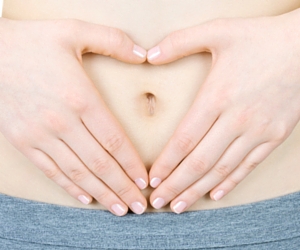Tummy Tucks After Pregnancy
Tummy Tuck and Pregnancy –
Board certified plastic surgeon Dr. Ali has helped hundreds of women in Oakland County “get their body back” after pregnancy. In this article he discusses the pros and cons of a tummy tuck after pregnancy – and what a woman can expect when she undergoes this procedure.
Perhaps no experience in life is more wonderful and rewarding than having a child. But the nine months of carrying a child can take its toll on a woman’s abdominal area. And the negative effects on a woman’s belly area can be even more pronounced after multiple pregnancies. For many women, a tummy tuck is the answer to restoring a flat and youthful appearance to their stomach.
Am I a Candidate for a Tummy Tuck After Pregnancy?
If stubborn pockets of fat are the only problem after pregnancy, a less invasive procedure such as CoolSculpting or Liposuction may be all that is needed. These procedures are less expensive, have fewer risks, and a much shorter recovery time.
However, if your abdominal skin is loose or lax – and/or if your muscle tone has been compromised – then you may need a tummy tuck. When you have a droopy, saggy or baggy stomach area – no amount or diet or exercise is going to tighten your skin and muscles and get rid of the so-called “pouch,” “paunch,” or “pooch.” And simply removing the fat underneath is not enough, either.
Tightening Stomach Area Muscles after Pregnancy
Diastasis recti is a condition in which the right and left halves of the abdominal muscles spread apart. This condition is commonly caused by pregnancy, when the tissue that connects the two halves of the “ab” muscles stretches as your baby grows and your uterus expands. And, pregnancy hormones can also add to the thinning of this tissue.
A small amount of muscle stretching is normal in any pregnancy. But a muscle separation of more than about 2 centimeters –which occurs in about 30% of pregnancies – is when this becomes a problem. This results in the appearance of a drooping pot belly.
Genetics can be big factor in developing the condition. Women who have carried more than one child at a time, petite women, and women with poor abdominal muscle tone have the highest risk of Diastasis recti.
C-Sections and Tummy Tucks
After a C-section, women are often left with a “C-section shelf” comprised of puffy, unevenly-healed scar tissue. Others are left with a caterpillar-like red, ridged scar, while still others end up with a low-hanging belly “shelf”. A skilled plastic surgeon can remove this distressing are of the belly – and sculpt it into a flatter and tighter abdomen.
Typically, a tummy tuck incision is made in the lower abdomen, which can completely remove a C-section scar. And in most cases, any stretch marks are also eliminated!
When to Schedule your Tummy Tuck after Pregnancy
The best time to schedule your tummy tuck is when you are finished having any more children – and at least six months after the last time you give birth. It takes the body at least six months to heal the deep tissues in your abdomen have been stretched and ripped as a result of carrying a child. And after six months, most of the stretching will have healed, and the pregnancy hormones that soften the tissue should no longer be in your system. Once this has happened, the ripped tissue will hold together better and heal more efficiently after the procedure.
Additionally, waiting until six months after childbirth is recommended because new mothers have to lift their babies constantly – which can put excess stress on a healing tummy tuck.
Also, if you are breast feeding, you should wait until at least six months after you stop. A woman transfers whatever is in the breastmilk to the nursing child – and breastfeeding influences your hormone production, as well.
Getting Pregnant after a Tummy Tuck
You can safely get pregnant and carry a child to term after a tummy tuck. However, pregnancy subsequent to a tummy tuck can “undo” to a certain extent the benefits of your tummy tuck. So, if you are planning to get pregnant again, most reputable plastic surgeons will suggest delaying your tummy tuck.
Oakland County’s Best Tummy Tuck Surgeon
Oakland County board certified plastic surgeon Dr. Ali has helped hundreds of women “get their body back” post-pregnancy with a Tummy Tuck. In fact, many women get abs that even look better than they did before their pregnancies! When you schedule a consultation with Dr. Ali, he will answer all of your questions – and help you decide if a Tummy Tuck is the right procedure for you.
 Marina – Dr. Ali's Assistant
Marina – Dr. Ali's Assistant





